
What draws people to mountains? Fellrunner Norman Hadley wonders at the forces that compel us, beyond all justifiable reason, to head to high places.
On a website such as this, in the longhouse of the tribe, we don't have to question what we do. Out on the hill, habituated to discomfort, we can hunch into the sleet and soldier on, not even pausing to lament the softness of the couch. And yet, a faint inner voice occasionally clears its throat to gently remind us that there's something slightly odd about all this. Now and then, it's instructive to listen.
So why do we put ourselves through it, time and again?
Wainwright famously scratched his chin at the south summit of Scafell Pike, watching pilgrims approach the main cairn and pondering their motivations: "they find something in these wild places that can be found nowhere else. It may be solace for some, satisfaction for others: the joy of exercising muscles that modern ways of living have cramped, perhaps; or a balm for jangled nerves in the solitude and silence of the peaks; or escape from the clamour and tumult of everyday existence."
Whether it's a work challenge, a relationship setback or even a bereavement, mountains teach us the scope of our capability
If you want to go further back, you could peer into Edmund Burke's 1757 treatise, "Philosophical Enquiry into the Origin of Our Ideas of the Sublime and Beautiful." In this context, sublime is akin to awe-inspiring, possibly inducing a sense of dread.
I'd like to have a swing at it, but first I'd like to summon an unlikely witness whose name is not readily associated with hillwalking.
Oscar Wilde has had a ton of quotes attributed to him, but this appears genuine: "there is no such thing as a universal truth. A Truth in art is that whose contradictory is also true." Now, we may find it easier to picture Wilde in a gin palace or Reading jail than on Crib Goch, but let's be guided by him anyway, using the most generous and liberal interpretation of "art". If we do, we might approach the question of why we are drawn to mountains as a series of opposites (or contradictories).
Hills are places of play. They are to be romped on carelessly
Start with Wainwright again: "The fells are not monsters but amiable giants. You can romp over them and pull the hairs on their chests and shout in their ears and treat them rough, and they don't mind a bit. They are not enemies to be wrestled with. They are friends. Go amongst them as you go amongst friends."
That has been a major part of my experience. I had the great fortune to be introduced to the hills as soon as I could totter and once on them, I stomped in becks, hurled myself from rocks, rolled down slopes and shrieked with laughter, the epitome of abandon. Now closer to sixty than fifty, that carefree sense has never quite left me, at least in summer. I love the ridiculousness of hills, the generosity of their wide spaces.
Hills are deadly serious
Of course I love mountains for the exact opposite reason too. Their conspicuous dangers, their sepulchral weathers, put me closer than anywhere else I know to the boundary between Here and the Great Beyond. When skies hang heavy with the blackest corvids and the slopes sprawl with carrion, the hills can be magnificently gothic and I relish that. I love that tingling sense at the edge of experience, especially in winter, when disaster might be just a footstep away, the senses whetted to a razor's edge of awareness.
This is heightened when you have a long history of near misses, of cornices whoomphing down into corries from whited-out plateaux, of rockfall filling the air with its gunpowder scent, or avalanches capriciously dinking left at the last second.
Nothing is more solid, more three-dimensional than a mountain
There is a reassuring physicality to a hill. This is particularly appealing to those of us working in the knowledge economy, spending our days staring into laptop screens swirling with vortices of abstraction. After a day's spreadsheet-wrangling, what could better ground the experience in the sensual world than a soaring mountain, with its coarse splintered rock beneath the fingers, its thundering becks, its tangy air cool on the tongue and the scent of bracken creamy to the nose? I need only scrape a shin on a boulder and I am fully engaged in the world of the Here and Now.
Hills are ethereal
Yet in mist, the weather clings to their outlines like lacy shrouds and they become diaphanous, ghostly things, more imagined than real. Or they shimmer hazy on some distant horizon, your eyes not quite sure how to distinguish ridge from cloud-bank.
A mountain is infinitely real, yet also seems to have been created for the sole purpose of generating metaphor. Its manifest challenges mimic the other more intangible obstacles in our lives.
Hills are eternal
For most of us, hills form our strongest connection with what Scottish geologist James Hutton called "deep time". Hills are the go-to in the phrase, "as old as…". We know that the rocks under our feet and beneath our fingertips are unimaginably old, and even the ice-formed corries and shattered ridges will have changed little since before human civilisation emerged.
Heaven needs a stairway, and "onwards" is always followed by "upwards"
Hills are ephemeral
Yet the sensory experience of a mountain may be fleeting: it may emerge from mist and be reswallowed in moments. In the course of a morning, it may be transformed from a snow-plastered shimmer to sunwashed to a hail-spattered burnish. The dancing light of scudding clouds may oscillate its mood from brooding to bright, and back again, in seconds.
Hills are reassuringly inanimate yet feel strangely sentient
As Wainwright notes above, the hills don't care about us. And yet. And yet. So many of us have a relationship with the hills that transcends all reasonable distinction between sentience and insentience. In poetry, assigning feeling to inanimate objects is frowned upon with that most damning of labels: the "pathetic fallacy".
Yet see how brazenly Norman MacCaig flirts with it, shamelessly feminising the landscape of Assynt before renouncing the metaphor in his next breath:
Who owns this landscape?
Has owning anything to do with love?
For it and I have a love-affair, so nearly human
we even have quarrels. –
When I intrude too confidently
it rebuffs me with a wind like a hand
or puts in my way
a quaking bog or loch
where no loch should be. Or I turn stonily
away, refusing to notice
the rouged rocks, the mascara
under a dripping ledge…I can't pretend
it gets sick for me in my absence,
though I get
sick for it.
Mountains look impossible…
Looking impossible is, informally, my definition of a mountain, as distinct from a hill. With this unabashedly subjective criterion, Stac Pollaidh qualifies where Meall Chuaich falls short, despite being fifty percent higher than Coigach's "irascible porcupine". And, yes, I'm fully aware I also use the terms hill and mountain interchangeably. Blencathra is a mountain when viewed from Clough Head, but a hill when seen from Skiddaw House. All in the eye of the beholder, and all that.
…yet they give of themselves surprisingly easily (at least they do in the UK)
Time and again, we gaze up at their apparently impregnable contours from the valley floor. We labour up these slopes fervently believing the task beyond us, only to find, to our endlessly recycled surprise, that we've reached the summit after all. Even though it makes no rational sense, this constant cycle of discouragement and overcoming helps us in our daily travails. Whether it's a work challenge, a relationship setback or even a bereavement, mountains teach us again and again the scope of our capability.
Mountains are just one part of nature, but uniquely inspiring
Sure, other tribes, in other longhouses, may say similar things about the oceans, the ice caps or the great forests. And that's fine.
But if you wanted to illustrate the concept of "challenge" to a child or, worse, if it fell to you to design an aspirational poster for middle management, you'd reach for the image of a mountain, wouldn't you? Nobody was ever inspired to strive harder for Acme Industries Ltd by the image of a caver slopping about in mud and darkness.
No, you want crampons biting into a pristine ridge, with backlit spicules of ice sparkling. That's why they called themselves Acme, or highest point, and not Nadir. Heaven needs a stairway, and "onwards" is always followed by "upwards."
- Snow and Suffering: 10 Types of Winter Mountain Misadventure 3 Mar
- Exiles - The Perspective of Distance 18 Dec, 2023
- OPINION: How Much is Just Enough? In Defence of the Ultralight Philosophy 2 Oct, 2023
- OPINION: Bagging - Going Beyond the Cult of the Summit 10 Jul, 2023
- OPINION: In Praise of the Gàidhlig 8 May, 2023
- ARTICLE: Snatching Winter from the Jaws of Spring 25 Mar, 2023
- The Lakeland Eight Hundreds - An Ultra Challenge for the Next Generation? 9 Jan, 2023
- Stag Spotting in Lakeland 24 Oct, 2022
- Fastpacking - Without a Pack 20 Jun, 2022



















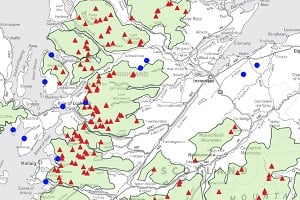

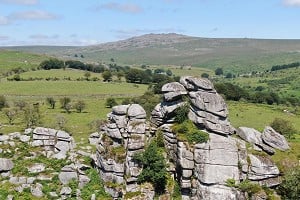

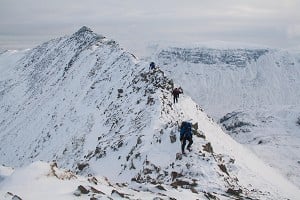





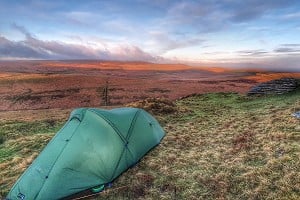

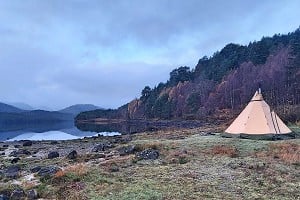
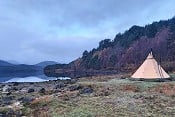

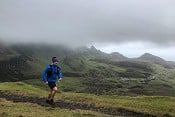
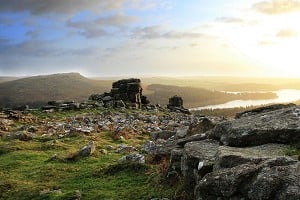
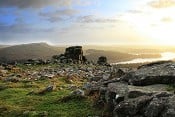
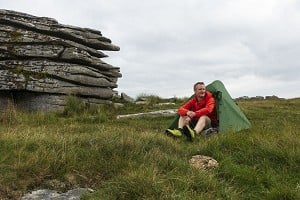
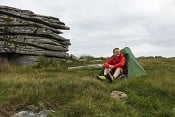

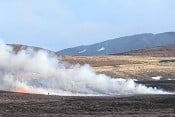
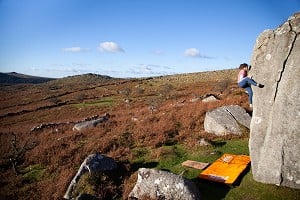
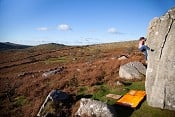
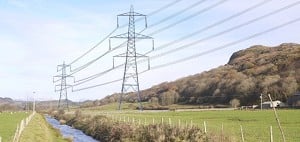

Comments
It's a laugh, innit.